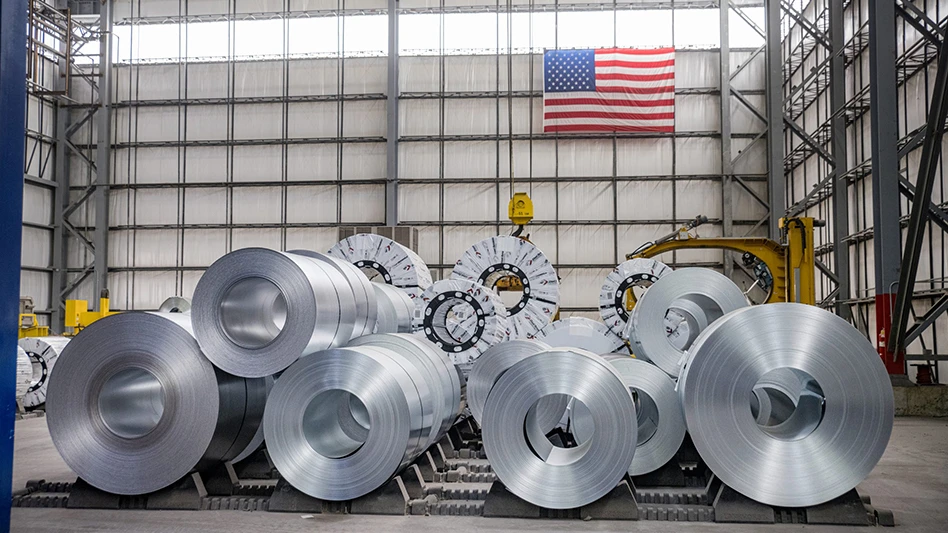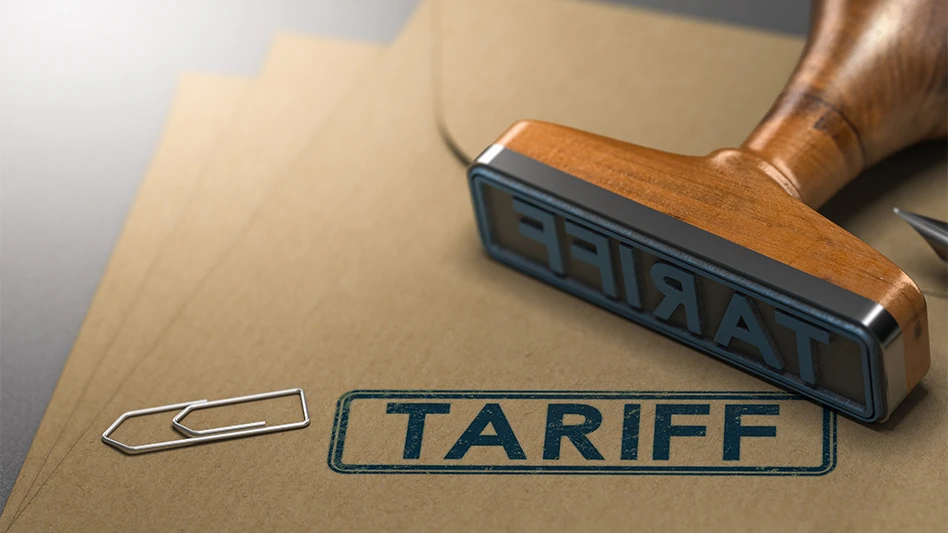 The economy is still the primary driver of demand for recovered paper. As economic globalization has reshaped the world to become a so-called earth village, we must always remember that the recovered paper market is a global one with all the important players linked to each other.
The economy is still the primary driver of demand for recovered paper. As economic globalization has reshaped the world to become a so-called earth village, we must always remember that the recovered paper market is a global one with all the important players linked to each other.
Following the sharp drop in prices for recovered paper in the European market in September, prices for most grades we track continued to slide across North America and Europe in October. They also took a dive in China. Specifically, average prices for OCC (old corrugated containers) declined by about $25 per metric ton in the United States and in Europe in the last two months to $175 per metric ton and to €100 per metric ton, respectively. Meanwhile, prices of imported OCC sourced from the United States and Western Europe dropped even more in China during the same time, declining by about $40 per metric ton to $236 per metric ton and to €195 per metric ton, respectively. The debt crisis in Europe and in the United States and the slowdown in the Chinese economy were believed to be the primary drivers for the sluggish demand for paper and board, which then dragged down the need for recovered paper in these regions.

Coming to a Halt
The global economic slowdown has put an end to the rebound that we saw in global paper and board demand in 2010 and early 2011. Weak demand first brought down prices for paper and board and then negatively affected demand for recovered paper. The first wave was seen in the European market, where falling paper prices, particularly for recycled-content grades, and the increasing recovered paper supply following the usual summer lull, came together to push recovered paper prices down in September. Prices for bulk grades of recovered paper dropped by about €10 to €15 per metric ton that month. Prices in the North American market also fell, albeit not by as much during the same course, mainly because of limited local collection caused by the hurricane on the East Coast.
Strong export demand to Asia, particularly China, also helped to keep prices in North America and China from falling further. Asian demand for recovered paper remained fairly strong as a result of the relatively healthy paper and board market. Plus, the Chinese government started to renew licenses for recovered paper exports/imports to China at that time, and no exporters/importers would want to see their allowable export/import level being reduced in the coming year, so they began to do everything they could to fulfill their quotas this year.
However, as the European sovereign debt crisis spread and the U.S. economy continued to stall, Asia could not remain immune from the global slowdown anymore. Europe and the United States are Asia's two key export markets, and there has been serious concern about the effects of another potential financial crisis or even a mild recession in these two regions on the Asian economy, especially on the export sector. As it turned out, this concern was not unfounded. For example, during the past few months China's economy has been moderating in response to the tight monetary policies and the slower growth around the world. Chinese exports have fallen for three consecutive months and are forecast to continue falling in the fourth quarter. Weak demand and oversupply pressures brought down prices for most paper and board grades in the Chinese market. Some paper mills started to take downtime or to run at lower operating rates to cope with the paper and board price erosion. Some announced that new paper and board projects have been postponed until next year to avoid the current sluggish market. This finally dragged recovered paper demand down significantly, which was followed by plunging prices in Asia and North America, as described at the beginning of this article.
Aside from the fundamentals of the general economy, another factor that deserves our attention is human emotion. It is well-established that psychology usually plays a big role in economics and that widely held beliefs often become self-fulfilling. The ongoing non-resolution of the European sovereign debt crisis, the high unemployment rate in the United Sates and the fears among investors that China is hurtling toward a massive real-estate market collapse have damaged people's expectations of the future.
Although the general economic outlook remains pessimistic, most of the economic data released recently brought some relief that the global economy is relatively stagnant rather than deteriorating or collapsing. But the crisis of confidence in the macro economy and fears of another economic recession have been undermining new orders for any material, such as paper and board and recovered paper in this case. So, people's negative feelings were believed to have played some role in the recent price dives in the global recovered paper market.
Determining the Cause
The price development of high-grade deinking grades has been dramatic this year, especially in the North American market. In September, domestic prices for high grades suffered their biggest loss in the North American market since the recession-powered market crash of late 2008. Prices for sorted office paper (SOP) No. 37 dropped by about $45 per metric ton after a runup from January through August that totaled about $90 per metric ton. Prices continued to slide by another $45 per metric ton in October in the United States and fell to $230 per metric ton, which is about $5 per metric ton lower than the price level in January, when the price rollercoaster started.
What happened in the high-grade deinking market reminded me of what happened in 1995 when the price of SOP No. 37 surged by about $180 per metric ton in eight months and then fell at a similar speed and finally dropped back to its starting point. So what are the causes of these price rollercoasters and what is the difference between these two?

The price rollercoaster in 1995 caught the attention of not only people in the pulp and paper industry but also of those in academia. In an academic paper by Frank Ackerman and Kevin Gallagher discussing the possible causes for the abrupt recovered paper price changes in 1995, the two authors conduct some econometric analysis and conclude that speculation, rather than "rational" economic factors (demand and supply), played a major role in the sharp price up sand downs.
What caused the price rollercoaster this year? One of the major drivers is believed to be export demand to Asia, particularly to China. Beginning in late 2010, exports of high-grade deinking grades from the United States to China started to surge. In November 2010, Chinese imports of high-grade deinking grades from the United States jumped to 18,000 metric tons, up from an average level of 11,000 metric tons in 2009, mainly in light of strong Chinese demand for high grades of recovered paper. The new recycled-based printing and writing paper projects that came online this year were claimed to be the major pushes for the surging demand for high grades.
Of course, Chinese paper mills also buy high grades for making white-top containerboard. However, Chinese imports from the United States started to calm down in the second half of this year. In September, Chinese imports of U.S. high grades dropped to less than 6,000 metric tons compared with the peak level of 28,000 metric tons registered in March 2011. Exports have become more and more important and are having much larger effects on the domestic recovered paper market in the United States compared with 15 years ago.
The sliding virgin pulp price in the past few months was another factor dragging the high grade deinking price down in September and October. A slight improvement in supply after the summer holiday also was believed to contribute mildly to the price dive for high grade deinking.
It's not easy for me to detect whether speculation played a big part in the 2011 price rollercoaster as it did in 1995, but I have one thing to share: The August inventory of high grade deinking grades in domestic U.S. paper mills was more than 80 percent higher than the bottom level posted in April, according to data from the AF&PA (American Forest and Paper Association), Washington, D.C. I will leave you to decide whether speculation was a major factor this time.
Lying Ahead
What lies ahead in the global recovered paper markets? The economy will continue to direct the price development of recovered paper in the future, especially for the bulk grades. Our general outlook for the global economy for the rest of this year remains unexciting. Although recently released economic data reflect a relatively stagnant economy rather than a collapsing one, the crisis of confidence has and will continue to undermine the general paper and board market and, thus, the recovered paper market for a while as I mentioned before. We do not expect to see a substantial recovered paper price rebound in the very near future but we also do not expect to see prices continuing to slide as they did in late September and October either.
Sponsored Content
Tackling the Extreme Grind
Built for the toughest applications, our Heavy Duty Granulators and Shredders deliver high-quality output, less waste, and efficient operations. With rugged designs and unmatched reliability, they’re ready for the extreme grind—keeping your production line moving and your recycling process profitable. Tackle more. Waste less. Perform at peak.
Recovered paper demand from Asia is projected to come back by the end of this year as the inventory level in paper mills declines and the finished paper and board market more or less improves. The Chinese New Year is coming in the second half of January, and the biggest holiday in China is expected to boost the paper and board market a little. Recovered paper prices, therefore, are projected to rise slowly and then stabilize by the end of this year in light of the slow recovery of recovered paper demand. Prices of bulk grades of recovered paper in the European and North American markets also will follow as Asian buyers start to purchase recovered paper again. However, there is a risk that prices could drop further if market fundamentals become worse than our baseline demand and supply scenarios.
As for 2012, our forecast shows that the U.S. economy will grow a little faster than in 2011. We project that domestic U.S. demand for recovered paper will increase, but only gradually, in 2012. Our outlook for the European economy remains pessimistic and the growth of the euro area economy in 2012 is projected to be even slower than this year. As for Asia, the slowing but relatively healthy economy, as well as the new recycled-based paper and board projects in 2012, will continue to need bulk grades of recovered paper from North America and from Europe.
On the supply side, paper and board consumption is expected to show very little or even no growth in North America and Western Europe. Consequently, recovered paper supply will be tight on a worldwide basis and create upward pressure on pricing for the bulk grades of recovered paper in 2012.
As for the high grades, consumption of printing and writing paper is forecast to continue to slide in the developed world and grow, albeit at a slower rate, in the developing regions, and this will leave the supply of high grades tight. We will probably not see prices of high grades dropping near the bottom levels posted in either 1995 or 2008.
Hannah Zhao, economist, recovered paper, is the author of the World Recovered Paper Monitor and co-author of the World Pulp & Recovered Paper Forecast. She works out of RISI's Bedford, Mass., office and can be reached at 781-734-8969 or at hzhao@risi.com.
Get curated news on YOUR industry.
Enter your email to receive our newsletters.

Explore the December 2011 Issue
Check out more from this issue and find your next story to read.
Latest from Recycling Today
- Deloupe offers trailers for the recycled metals market
- Greenwave to undertake another reverse stock split
- CAI Custom Alloys acquired by EverMetal
- Cronimet finalizes JV with battery materials firm
- Producer registration opens for California’s packaging EPR program
- Nexus Circular adds former Braskem America CEO to board of directors
- Houston receives new recycling trucks
- Ace Green unveils system to support antimony recovery, lead battery recycling









